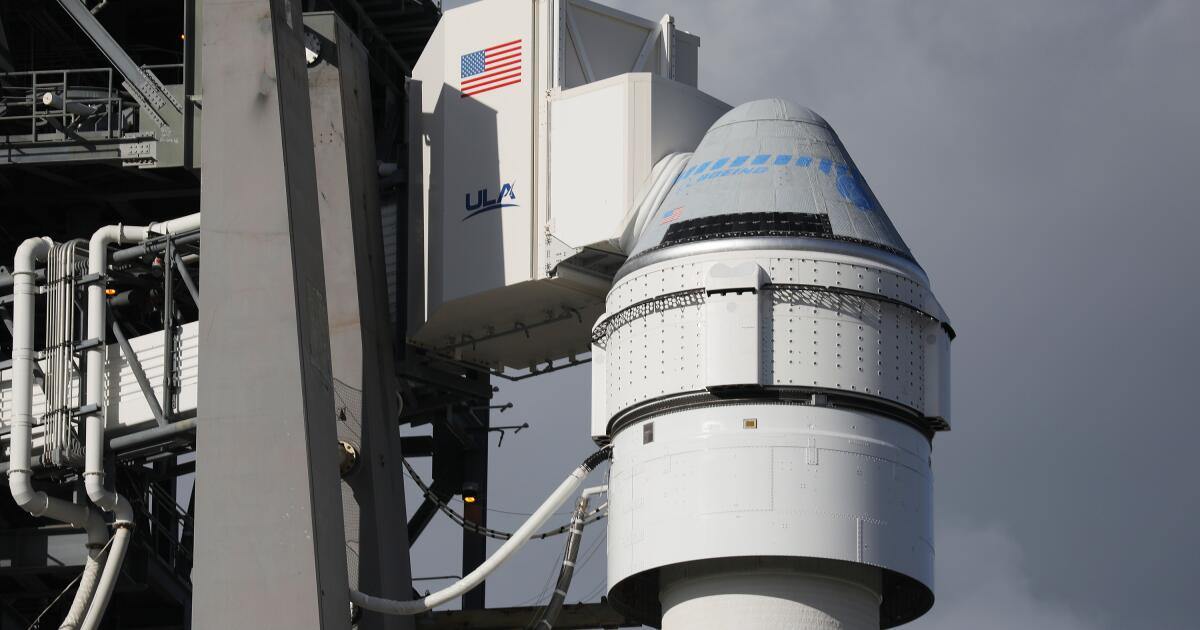SpaceX will bring home the two astronauts stranded on the International Space Station due to troubles with Boeing’s Starliner spacecraft, NASA announced Saturday.
NASA Administrator Bill Nelson said the decision was driven by the agency’s commitment to safety, especially following the disasters that beset the space shuttle program.
“This whole discussion, remember, is put in the context of we have had mistakes done in the past,” Nelson said at a news conference. “‘Space flight is risky, even at its safest and even at its most routine. And a test flight by nature is neither safe nor routine.”
The decision by NASA to bring home astronauts Butch Wilmore and Suni Williams on SpaceX’s Crew Dragon capsule in February follows months of irregularities that have hobbled the third test flight of Boeing’s Starliner spacecraft — which began even before its June 5 launch and with the program already years behind schedule.
The capsule was originally set to blast off May 6, but that flight was scuttled because of a malfunctioning valve on the Atlas V rocket that launches it into space. Additional launch dates were missed after a helium leak was found in the propulsion system that propels Starliner in space.
The helium pressurizes the system’s rocket fuel but NASA and Boeing officials decided the leak was not serious and developed software fixes to work around it. However, the leak grew larger as the spacecraft approached and docked with the space station the next day.
More concerning was that the propulsion system’s thruster engines malfunctioned during the docking procedure.
Ground testing on an identical thruster NASA conducted last month found that Teflon used to control the flow of rocket propellant eroded under high heat conditions, while different seals that control the helium gas showed bulging.
NASA officials have maintained Starliner has 10 times more helium than it needs to return to Earth and the craft could be used if there were an emergency situation aboard the space station. And this month Boeing issued a statement that cited all the testing that had been conducted and concluded, “Boeing remains confident in the Starliner spacecraft and its ability to return safely with crew.”
NASA said Saturday that the Starliner will now return to Earth remotely next month.
It will touch down in the Arizona or New Mexico desert in a parachute ground landing pioneered by the Soviets decades ago, rather than the ocean landings typical of U.S. space flights. That makes it easier to ready the reusable craft for another launch. However, the propulsion system is jettisoned in space, so NASA and Boeing engineers will not have a chance to take it apart.
Boeing and SpaceX were given multibillion-dollar contracts in 2014 to develop spacecrafts to service the International Space Station.
Since 2020, Elon Musk’s Hawthorne-based company has ferried more than half a dozen crews there aboard its Crew Dragon capsule — while Boeing has managed only two remote flights, including one in May 2022 that docked with the orbiting lab.
For years, NASA had to rely solely on Russia’s Soyuz craft to send U.S. astronauts to the station after the space shuttle program ended in 2011. NASA plans to continue to partner with the Russian program, which along with the U.S. was the primary constructor of the orbiting lab that launched in 1998.
The aging space station is scheduled to be retired in 2030. In June, NASA awarded SpaceX an $843-million contract to build a craft that would nudge the station safely out of its orbit so it can burn up in the atmosphere, with any stray pieces landing in remote areas of the ocean.
The problems that have plagued Starliner have been an embarrassment for Boeing, which is still grappling with an investigation into a door plug that blew out during a 737 Max 9 airplane flight this year to Ontario International Airport in San Bernardino County. That followed the two crashes of its 737 Max 8 jets several years ago that severely damaged his reputation for safety.
Just this month, Boeing wrote off $125 million in expenses related to the Starliner program after previously booking some $1.5 billion in cost overruns.

